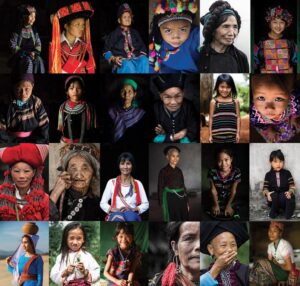
Current communication situation in ethnic minority areas
Ethnic minority areas in Vietnam are mostly in mountainous, highland, remote areas with low intellectual level, difficult economic conditions. So, the purpose of access to information also differs from the delta areas. The actual survey results show that 86% of people regularly watch TV; 30% listen to radio, 28% read newspaper. Of which, 80% of the public watch / read newspapers for cultural and entertainment needs; 73% are interested in information about agricultural production; over 55% are interested in domestic news, only 15% are interested in international information; nearly 40% are interested in information about policies and laws, especially policies related to people; 27% follow threads about typical cases of good economic practices; 28% are interested in information about medical and health care; 25% are interested in information on scientific and technical progress; 42% are interested in information on poverty reduction; 9% are concerned about the economy, market price, business….
During recent times, press agencies have actively developed programs, categories and articles aimed at the ethnic minority public, at the same time introduced and promoted the economic and tourism potential of ethnic minority areas. The direct communication system at the grassroots level has been consolidated. In most remote villages and networks, telephone networks have been strengthened, loudspeakers, cultural houses of villages and hamlets provide regular and practical information for people. Oral communication was promoted through village elders, village chiefs, reputed people, reporters, border guards, teachers and medical staffs. The act of hanging many panels, posters, distributing tapes & discs, leaflets, etc. has contributed to propaganda and helped explain and direct people how to implement new laws and policies, build cultural lifestyles, protect the environment, encourage the study, protect political security, social order and safety. Cultural activities, traditional arts, festivals are also a good opportunity to integrate new policy communication. Most ethnic minorities like to watch/view things that are visually vivid, so it is easy for them to absorb new information in festivals, arts, films, plays…
However, there are some issues:
– Firstly, the number of media organizations serving the information needs for ethnic minority areas is rather high.
– Secondly, articles and programs written on ethnic minorities are still simple and heavy on policy propaganda, not yet re-edited to match the cognitive level of ethnic minorities.
– Thirdly, the level of investment from central and local authorities for communication is quite large, however, the percentage of articles published in the Central newspapers writing/talking about ethnic minorities is still small (5-10%).
– Fourthly, direct communication is quite effective, but due to the lack of cultural houses in many places, village and hamlet meetings cannot gather a large number of people and are not even held periodically; community activities are sparser.
Some solutions
– Firstly, the Ministry of Information and Communications checks and supervises the content of media writing about ethnic minority areas; timely handles writings and articles showing signs of custom and tradition violation, misleading information about ethnic minorities, discrimination against ethnic minorities.
– Secondly, press agencies should assign a number of journalists and reporters in charge of writing about ethnic minority areas, from which there should be a plan for training, fostering and self-researching to gain in-depth knowledge; or recruiting ethnic minority journalists to work.
– Thirdly, improve the quality of radio and television programs for ethnic minority areas, increase in-depth reportages; improve the quality of VOV4 and VTV5 channels to attract more audiences.
– Fourthly, media and press agencies should promote the potential and strengths of ethnic minority areas in order to attract investment, tourism, and link socio-economic development with other localities.
– Fifthly, consider building a network of press media collaborators in localities; open training courses, teach them skills in photography, filming, writing and sending articles or news items to press agencies.
– Sixthly, enhance fostering professional communication skills for grassroots communicators, continue to invest in building cultural houses (community activities). Every year, the meetings of village elders, village leaders, the communication collaborators should be held to summarize and learn from experiences, at the same time train and guide them about communication and presentation skills.
– Seventhly, encourage organizations and agencies to promote communication in ethnic minority areas, including businesses and NGOs.
– Eighthly, make use of resources and funding for communication in ethnic minority areas rationally and effectively.
REFERENCES
- Nguyen Tan Dung (Prime Minister) (2011), Vietnamese Government, Decree No. 05/2011/ND-CP on ethnic minorities work, 2011.
- Nguyen Duc Loi- Luu Van An (co-editor) (2017), Press information for leadership, management, News Agency Publishing House.
- Dang Thi Thu Huong (2018), Development media, ethnic media – theoretical and practical issues, Hanoi National University Publishing House.
- Luu Van An (2020), Report on the communication results of the National Project “Communication in ethnic minority areas, situation and solutions, code CTDT.31.18 / 16-20 in: Hanoi, Son La, Yen Bai, Quang Ninh, Soc Trang, Kien Giang, Ho Chi Minh City, Dak Lak, Gia Lai, …
** The author is an Associate Professor and Acting Rector of Academy of Journalism and Communication, Vietnam**
![]()

